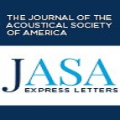Differences in interaural phase configuration between a target and a masker can lead to substantial binaural unmasking. This effect is decreased for masking noises with an interaural time difference (ITD). Adding a second noise with the opposite ITD (double-delayed noise) in most cases further reduces binaural unmasking. Thus far, modeling of these detection thresholds required both a mechanism for internal ITD compensation and an increased binaural bandwidth. An alternative explanation for the reduction is that unmasking is impaired by the lower interaural coherence in off-frequency regions caused by the second masker (Marquardt and McAlpine, 2009, JASA pp. EL177 - EL182). Based on this hypothesis, the current work proposes a quantitative multi-channel model using monaurally derived peripheral filter bandwidths and an across-channel incoherence interference mechanism. This mechanism differs from wider filters since it has no effect when the masker coherence is constant across frequency bands. Combined with a monaural energy discrimination pathway, the model predicts the differences between single- and double-delayed noise, as well as four other data sets. It helps resolving the inconsistency that simulation of some data sets requires wide filters while others require narrow filters.
翻译:目标与遮罩器之间在间相位结构上的差异可能会导致巨大的硬膜松动。 这种效果在掩盖有间间时间差异(ITD)的隐蔽噪音方面会减少。 在多数情况下,以相对的 ITD (双延迟噪音) 添加第二个噪音会进一步减少双延迟噪音。 到目前为止,这些检测阈值的建模既需要内部 ITD 补偿机制,也需要增加二进制带宽带宽。 减排的另一种解释是,由于第二个遮罩器(Marquardt和McAlpine,2009年,JASA pp. EL177 - EL182) 造成的非频外区域内部一致性较低,因此将这种效果降低。 基于这一假设,目前的工作提议使用一个定量多道模型,使用音导的外围过滤带宽宽带宽和跨声带宽隔带宽的干扰机制。 这个机制与更广泛的过滤器不同,因为当掩蔽器在频带之间保持常态时,它不会产生任何效果。 与一个单调能源歧视路径结合, 模型预测了单式和双层过滤器过滤器之间的差异,同时需要解其他数据。







